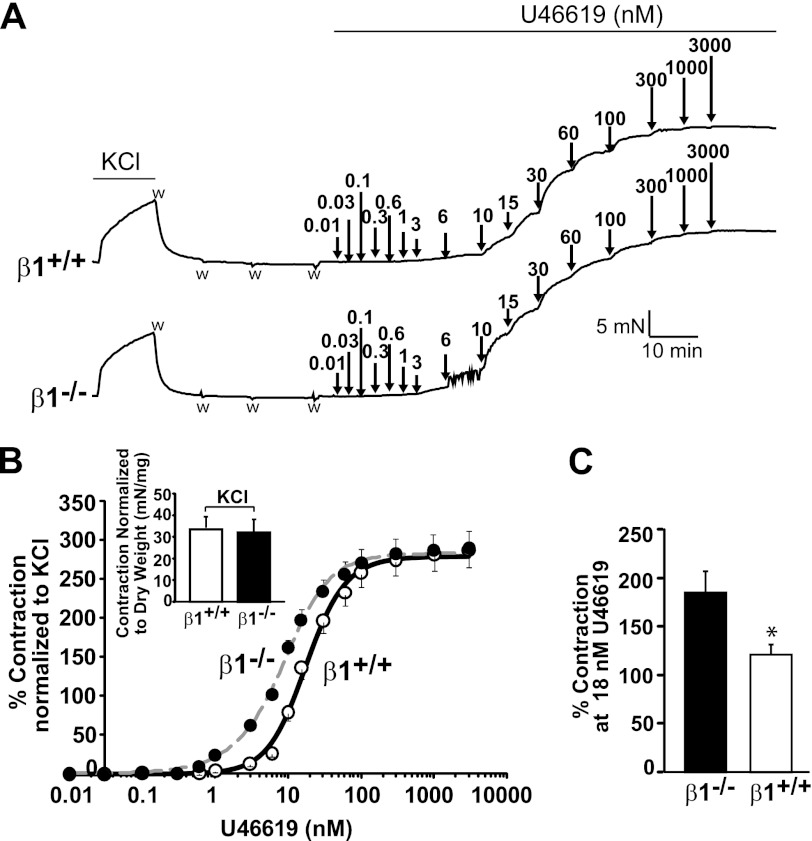FIGURE 5.
β1 buffers U46619-induced aortic contraction. A, typical contractile responses of aortic rings from β1+/+ (upper) and β1−/− (lower) mice elicited by 80 mm KCl and by cumulative concentrations of U46619 (0.01–3000 nm). The arrows mark the times of addition of U46619, and w indicates washout. B, mean dose-response curves of U46619 in aortic rings isolated from β1+/+ (○) and β1−/− (●) mice. Contraction was normalized to KCl response and is expressed as a percentage. A significant leftward shift was observed in the β1−/− mice (change in potency) without a change in maximum contraction (efficacy). The EC50 (a measure of drug potency) was 9 ± 1 nm (n = 12) for β1−/− mice versus 18 ± 1 nm (n = 12) for β1+/+ mice (p < 0.001), whereas the maximum contraction was 284 ± 69% and 315 ± 98% (p = 0.5) with respect to KCl contraction, respectively. The inset shows similar KCl-induced contraction in β1+/+ and β1−/− mice when normalized to the dry weight of the rings. This normalization was applied because relying on the approximate width of aortic rings (∼3–4 mm) can yield significant errors. C, the calculated percent contraction at 18 nm U46619 (EC50 in β1+/+ mice) was higher in β1−/− mice than in β1+/+ mice. *, statistically different with respect to β1−/− animals (p < 0.01).

